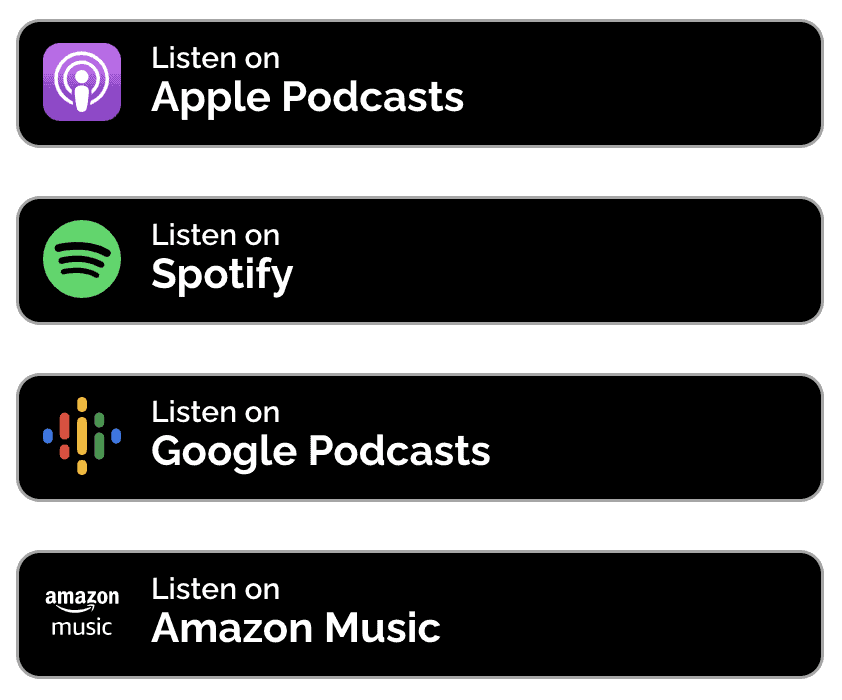Listen to this episode with Diane wherever you get your podcasts:
Diane Hill is a London-based painter who has grown an amazing art business selling prints and original works that are a modern take on a traditional Chinese painting style, Chinoiserie.
Her love of the Chinoiserie style feeds into her creative vision and her incredible painting precision. Add to this a gift for marketing, in-particular her video-focussed social media strategy and you have a winning combination that has helped her achieve creative freedom. In fact, Diane has been in our top 10 best sellers since the day she started selling prints!
In our latest podcast, Diane spoke to Stuart Waplington, founder of theprintspace and host of the Sell Out Podcast, about her video strategy and why she thinks it has not only helped create a deep connection with her audience, but also increased her online art sales.
Can embracing video content do the same for you? Find out by listening to this podcast episode!
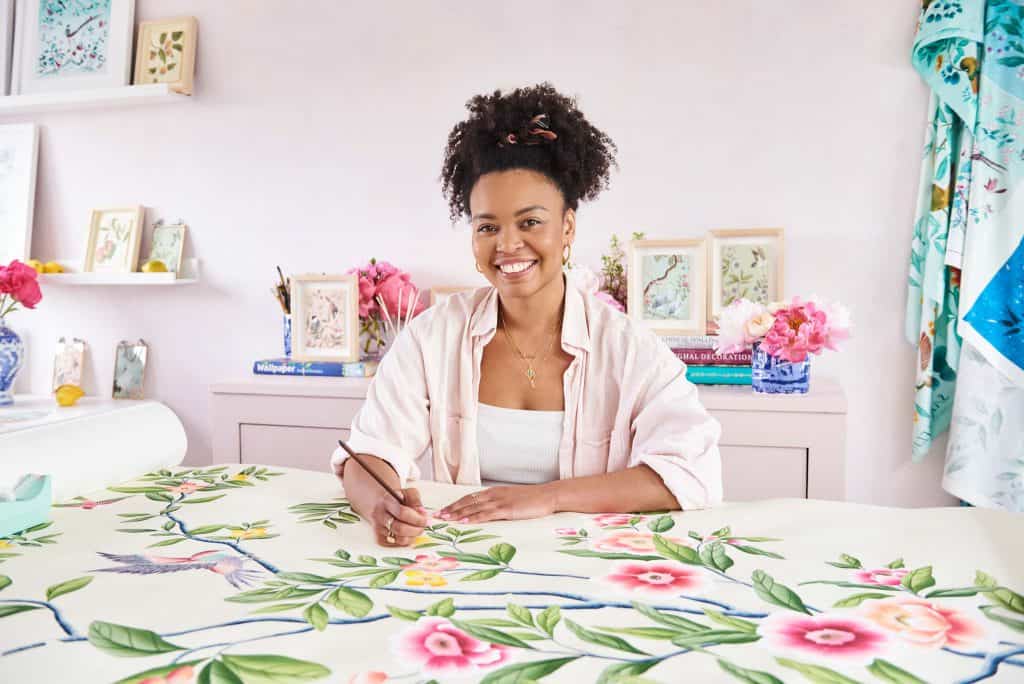
Key Takeaways
15:38 – It’s all about video
“People want to watch videos. I realised that years ago when I would upload a video of me painting, the engagement would be crazy. This is just the way it’s working. Of course people wanna see stills but you’re getting engrossed in a video. You can experience it. You can see the story and the behind the scenes..that is what is so important with being an artist and trying to sell yourself. You cannot just show the final product in a still image. You really want your audience, your customers, to get engrossed in what you do and your techniques.”
17:32 – Create shareable content
“When you create high quality content, other people share it and those other people could be accounts with millions of followers. That is literally how it works. That is how my account has grown. Because video is so engaging that other bigger accounts share it. When big accounts share you can get thousands of followers overnight. That’s the importance of video.”
18:41 – Engagement is key. Not follower numbers
“I think once you get past the 100K mark, it doesn’t matter anymore. You want your audience to be engaged. That’s the key. The number of followers doesn’t matter if they are not loving or engaging with what you say.”
19:41 – People love stories!
“Emotion always wins. Anything with emotion or telling a story from rags to riches, they always win. Anything that helps other people. You cannot just think about yourself. You have to think about your audience and how they will benefit from what you have to offer.”
26:00 – Keep content short and concise
“You have to just delete as much as you possibly can while still making sense because people don’t have much of an attention span on Instagram now. It’s so noisy. You just have to be really short and concise. I think a lot of the best reels are around about 10 seconds. That’s not to say that it’s a rule or anything but the ones that really capture me are just so specific and to the point.”
31:53 – Social media is your best sales channel
“When I don’t post on social media I don’t get sales. So I have to dedicate more time and effort into my marketing than I do on my painting. It is crazy.”
43:26 – Social proof is really important
“How can people necessarily trust that you are real? If they are from a far away country and they can’t relate to you in any way, they need to see that real people are buying from you and sharing their experiences. That’s definitely gonna help them make a purchase.”
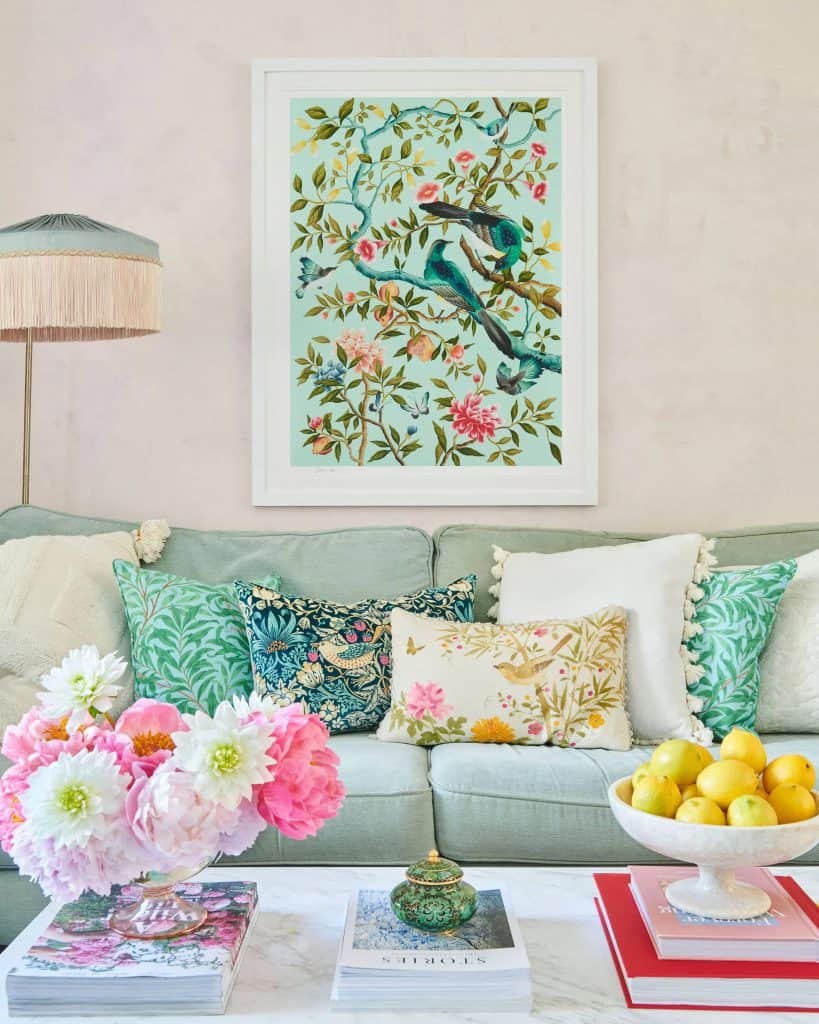
Transcript
Stuart: Welcome Diane. It’s a real pleasure to have you on the podcast today.
Your style is very unique and distinctive, the Chinoiserie style, I’m hoping I pronounce that okay. How did you come to get into what you’re doing in terms of your painting? Has that been something you’ve always done? And also how come you have developed this very particular style?
Diane: I have always been painting, right from when I was a child, so my path followed the kind of normal route of an art foundation course and I went on to study at uni. I studied textiles, but it was very focused on painting and painting with gouache paints, which is like watercolour but it’s more pigmented. The colours are really vibrant. So that was the focus there and I really specialised in wallpaper when I was there in Manchester. When we were asked to sort out our work placements, I found in a book, this Chinoiserie wallpaper, and it was non repeating. I was used to those wallpapers that repeat up, down, side to side, you can just go with the decoration; but this wallpaper was different. It tells a story. It’s like a row of trees and birds and butterflies.
It’s a kind of style that is made in China, but it’s made specifically for the export market. So it was all made in China in the 18th century and it was exported to Europeans and still is today. Back then in 2007, when I was really looking at it, there were a few companies still making it on silk, all hand painted. I got in touch with one of the companies. I wrote them a letter and it was very like, please can I come work for you? And they said yes. It was just the best thing ever. I went there for a week. Fell in love because it was hand painted. I had thought that I would leave uni and get into a role that was, I don’t know, like you’d start off with admin, or it would be like graphics or something. Because this was so hands on, I just felt like the luckiest person in the world. I was actually pregnant in my degree show, heavily pregnant. Had the baby, did that. And I kept in touch with this company. Just called them every now and then, buttering them up. And eventually after about two years, they offered me a job and it was just the best thing ever.
While I was there for about six years, I went to China. I went to learn from the masters, how to paint on silk using specialists like natural brushes, Chinese brushes, this gouache paint and learning these skills and techniques that you just wouldn’t be able to learn here cuz you really need to go there and experience it. The level of detail and layering is like nothing I’ve ever seen. I just love Chinese art so much. So yeah, I worked there and that’s really where I learned everything that I know now. And then I had my second child. I was working in West London and I live in Hertfordshire so the commute was so long and I thought maybe I had something more to offer as well. And yeah, I quit that and moved on to my own thing, doing this kind of style, but on murals, cuz I wanted to start a business and I wanted to just do it with my bare house cuz I didn’t have the funds to invest in stock of anything. So I just painted murals in my home.
I painted my daughter’s rooms, painted the living room walls, started a little Instagram account and made it almost look like I was working for other people, but just uploading it. And then gradually I got one job, painted some murals, and it really slowly built up. It was so organic and lovely. I didn’t invest much into it and it just grew like that. And yeah, the art prints came in very organically as well near the start. I just thought, why not try this print thing? I had a Squarespace website at the time. I just did one art print and didn’t get many sales actually, like at all. I think I sold, maybe I’d be lucky if I got one a month. But yeah, the art prints kind of developed really naturally. I can go into it if you want a whole sort of story.
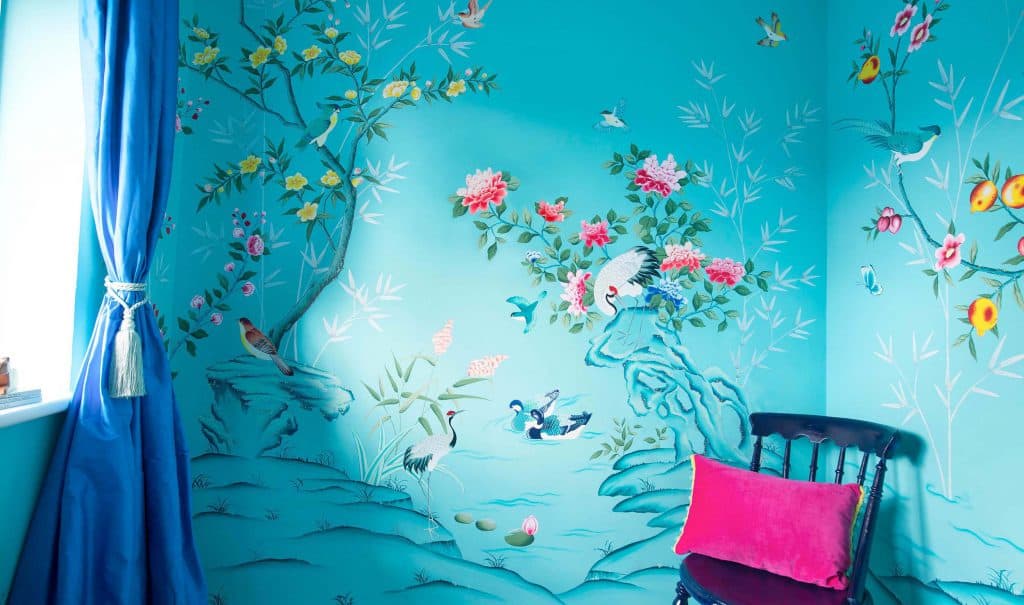
Stuart: You said something there about selling one art print a month. I think for most people, it starts off slow. But you know that if I can sell one a month then it’s possible to sell 10 a month. It’s when you sell none and you’re like, is there even a market for this?
But just backing up a little bit, I feel like one of the things a lot of creative people and probably a lot of people listening to this podcast have is that they are working in a commercial aspect of creativity and they’ve always had it in their mind to strike out and do their own thing like you’ve done. And I think the hardest step is probably the first one and the scariest one is the first one. It’s just actually in your mind saying I’m gonna quit. Was that hard for you?
Diane: Oh gosh! Yeah totally. I had the support of my husband, but I can’t quite imagine what I’d be like if I didn’t have that, like some sort of support to just quit a steady income. But I’m so passionate about what I do and I have these big dreams, and when you are so aggressively passionate, nothing will get in the way. It just happens because you just don’t stop. Like your world is about making this grow, sharing it with the world and even if you try to calm down, the little monster inside you is just gonna keep working. That’s what passion is.
Stuart: Totally. At the same time, it sounds like you were working in the area that you were interested in and with the style you were interested in. So there must have been that sense of, I am leaving something that is at least related. I don’t have the freedom that I want, but at least it’s related to what I’m doing. So there must have been that sense of maybe if this doesn’t work out, I’ve left something and I end up doing something way worse or you just didn’t even consider the idea that this wouldn’t work out?
Diane: I didn’t actually consider the idea that it wouldn’t work out. I can have those days where I would be crying to my mum, oh, this is never gonna work out. But then I know it actually is. It’s just me having those down days. These wallpapers are for the luxury high end market and I was so used to flying around the world, working on yachts, and amazing hotels. I knew that I’d learnt those skills and I knew that there was a market there and that those skills I’d learnt were so niche that as long as I have one or two clients in that kind of certain area of London, that nice rich kind of area, one job, I thought that will get me by if I have the skills that they need and they want; I just need to reach them.
I knew that because it was such a niche market, which I guess is really different to someone who’s doing a style of art that is maybe not as niche. If you just had to suddenly go online and try and compete with a whole bunch of other people that were maybe similar. So it worked to my advantage that it was such a niche technique.
Stuart: Yeah. It’s interesting what you say there because you’d been working in such a sort of directly related job that you’d already had experience in the market and you knew there was a market there for it. And I think actually that’s something that maybe if you don’t have that prior experience of the market, then I think a lot of people that sell prints and make work in their spare time because they’re testing out the market. But then I often wonder as well: unless you are doing something and throwing yourself into it full time, and you’ve got that thing of, this is gotta work cuz I’ve got no alternative. Then you find ways of making it work, but you wouldn’t if it was just a sideline sort of thing.
Diane: A hundred percent. I worked so hard and obviously it wasn’t fast. It was like sitting there waiting for someone to reply to an email. Am I gonna get this job? And I can offer you this, I can offer you that. So I think I’ve got a bit of a sales knack to me, which I think a lot of artists do struggle with, but you should definitely aggressively sell yourself because you need to. No one else is gonna do that for you. You absolutely have to.
I did throw myself into it and it took a bit of time to build it up. But yeah, I knew it would happen eventually.
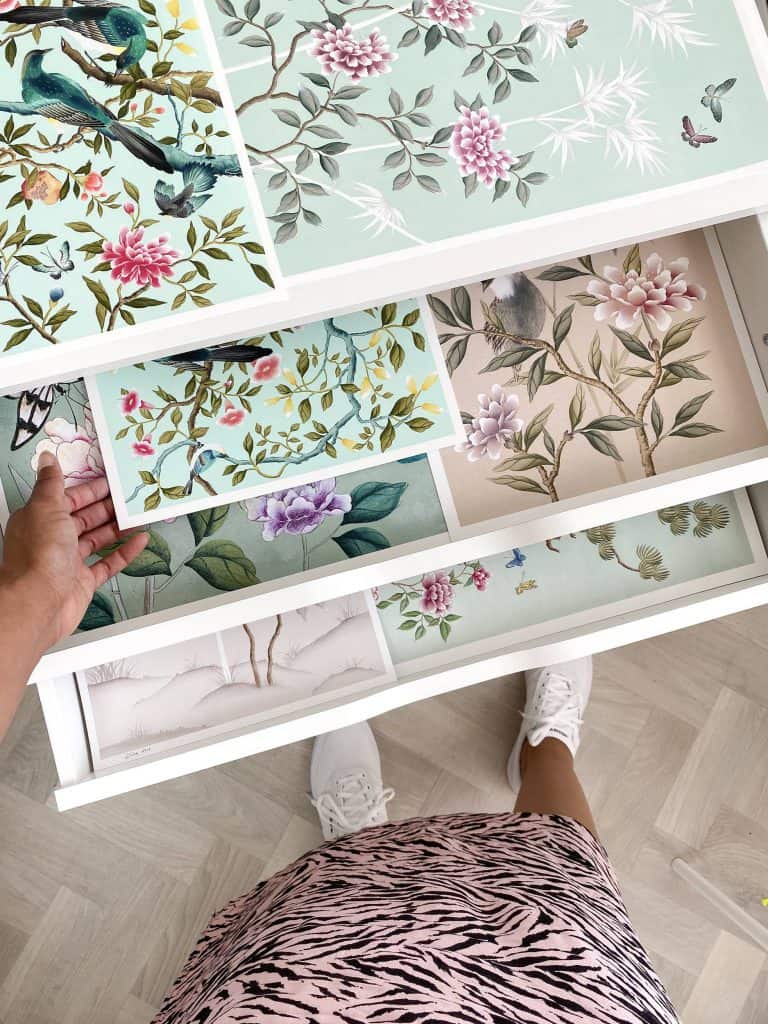
Stuart: If you have that self-belief about things then you find a way, even if it’s not a straight direct A to B route. You just find a way of making it work. You were getting work principally from Instagram or were you actually reaching out to potential clients as well?
Diane: I feel like everything’s come from Instagram. Anything that’s ever happened in my business that’s been good, has been Instagram. That is crazy. I did reach out to people. I’m trying to think of the ways in which I did it. I did get a little feature in Vogue, I have to say, at the start. That was amazing and I know that people did find me there. Any sort of press like that is gonna be amazing if you can and you can do it. But that Vogue feature came from social media as well. That’s where they found me. But I think it really was mainly being on Instagram and using hashtags and just following people. I followed all the interior designers that I could find, particularly in London. I’d hashtag things like mural artists London, artists London.
Stuart: Isn’t that thing there on Instagram where if you do follow someone they always check you out?
Diane: Yeah, exactly. They wanna see who else has got what you’ve got. If they can’t see that anyone else has used your work, then often you’re not gonna get the job. So there needs to be evidence there.
Stuart: Totally. And how did you create that? Of the start? Cause it’s chicken and egg, isn’t it?
Diane: It’s so hard. As I mentioned earlier, I used my house. I think the style, the Chinoiserie style that I paint, I think it’s very beautiful. It’s so beautiful. And I think it’s really attractive and it’s easier to gain attraction. So it’s a bit easier to gain followers, I think. And people really have such an emotional response to it. So yeah, I used the walls in my house. I didn’t use my kids but the painting on the walls of my daughter’s room. And my friend came over, he’s a professional photographer and he took these amazing shots of my daughter Bonnie as a baby in her room and my older daughter as well, at the time she would’ve been about seven, in her room. It’s just that element of pulling everyone in the family together. It tells a bit more of a story. And I think people like that.
I’m trying to think where my next client came from. My first one was someone really local and then I think the next one was just again, like a friend of a friend maybe, and that was in London. And then once they’d seen that, those two, and I charged nothing like hardly anything for these ones. It was like giving it away in comparison to what I ended up charging. And I don’t do any of that work anymore. It’s just art prints. But in comparison to what I ended up charging, it was just like a sample price. But that’s what you have to do, I think, sometimes. You have to either work for free or do one or two to start with. That’s your evidence, isn’t it? Then every time you document it, you take photos. I invested at the beginning in a Canon SLR and it felt like a crazy investment at the time. I think it was about 800 quid to get a lens that would capture my work properly. Then I had to learn how to use it, but I knew if I documented these first few, then that’s gonna set me up. It’s gonna really help set me up for the future.
So for those murals, I just took my camera along with me and took shots that ended up looking quite professional. And the clients were really happy for me to do that as well and use it. In fact, it was more like a requirement of mine before I started the job that I really needed to use images. So if I was ever doing work and I know they wanted it to be secret, then that’d be really hard, I think. It’s just harder to get yourself out there if it’s just gonna be just word of mouth industry, which a lot of the high end stuff really is like they want contract signed NDAs, all of that, but I’m like the opposite. I need to tell the world about what I’ve done.
Stuart: And now how are you finding Instagram? Because you said a lot of the positive things that have happened and helped you develop your business, have come from Instagram. And I notice on your feed now, for example, you are very much focused on video, which is what everybody says that you need to do now to continue growing.
Have you found that has enabled you to continue growing because I’ve spoken to some people who have grown big followings in just the last two years, and then I’ve spoken to other people who grew big followings, maybe sort of seven or eight years ago, but they found that the growth has tailed off a little bit. I wonder if that’s something to do with video or not?
Diane: Everything’s to do with video. A hundred percent. I realised this a long time ago. I don’t think this is something that Instagram is doing to people. People want to watch videos. I realised that years ago. When I would upload a video of me painting, the engagement would be crazy. This is just the way it’s working. Of course people wanna see stills, but you get engrossed in a video. You can learn, you can experience it. You can see the story and the behind the scenes. That is what’s so important being an artist and trying to sell yourself, you cannot just show the final product in a still image. You really want your audience, your customers to get engrossed in what you do and your techniques and your unique stroke, your brush strokes. People find the way I paint very therapeutic and unique. And how could they ever get that from a still image?
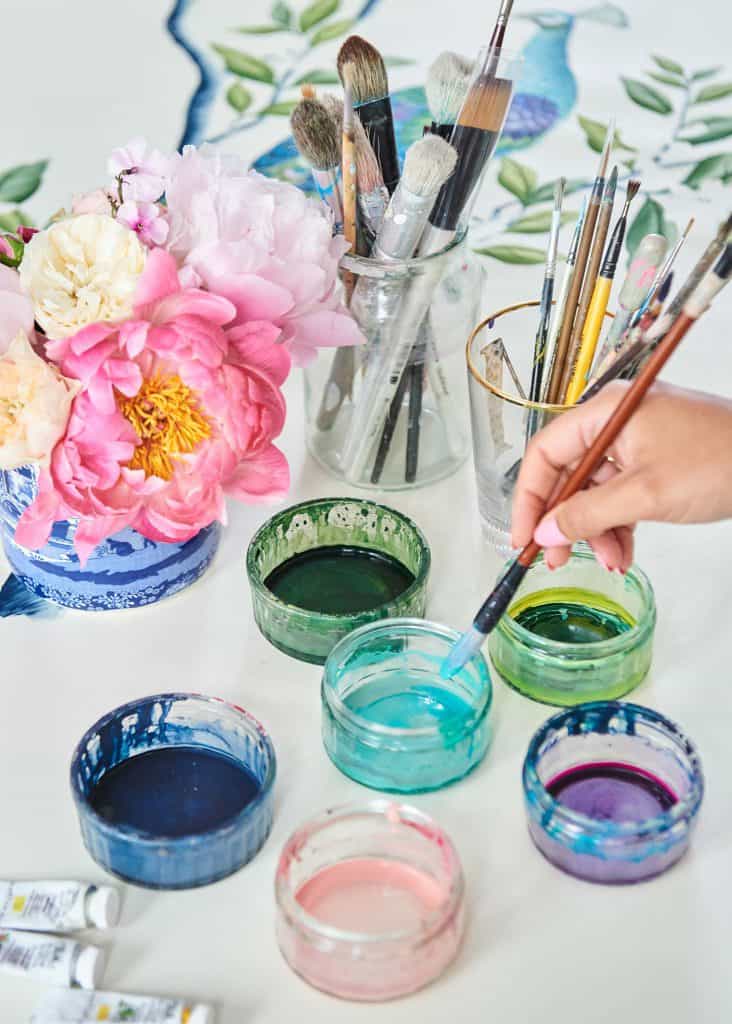
When I first started doing videos, they were so bad. This was maybe like three or four years ago. My phone would be wobbling. It wouldn’t be edited at all. It would be just like a shot of me painting some feather details or whatever. I just uploaded that. It’d still do really well for those times. Then I remember maybe two years ago, I started to use the InShot app. It’s an amazing app. I love it. I never make anything inside the Instagram app. And I started to curate them and make them a little bit shorter and put music in that. It felt a bit more new at that time. And then I remember like the first ones I did, whoa, the likes were like 5,000 likes on one video because they would get shared. So when you create high quality content, other people share it and those other people could be accounts of millions of followers.
That is literally how it works. That is how my account has grown with video, that’s so engaging that other bigger accounts share it. When big accounts share, you can get thousands of followers overnight. That’s the importance of video.
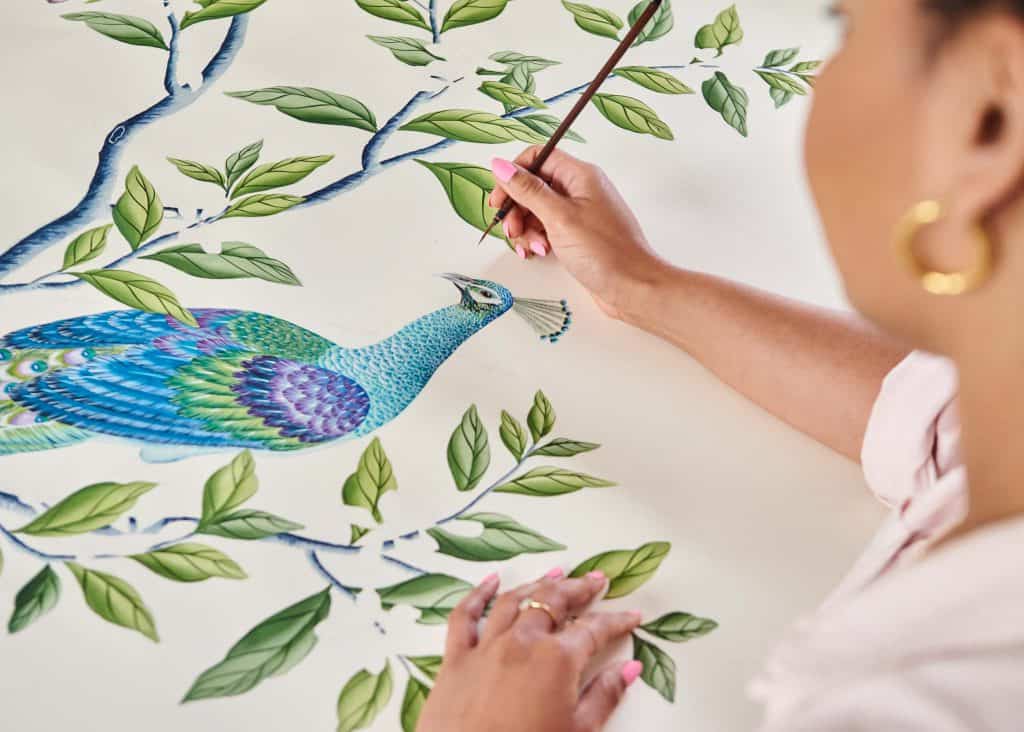
Stuart: So you haven’t seen any reduction in the growth?
Diane: That is a difficult one. My growth has been a bit slower actually, I have to say, since all of the new things. I could get 20,000 likes on a video or like between 10 and 20 thousand maybe like a year or more ago. And now my average is like two to three thousand. My following, it grows, but it doesn’t grow at that exponential rate. I went through a real growth spurt and now it gets a bit bigger, but it’s nothing like huge. I think once you get past like a hundred thousand, it can be a little bit slower, but it also feels like when you get past that mark, it doesn’t matter anymore. It really doesn’t matter. You want your audience to be engaged. That’s the key. Engagement. The number of followers doesn’t matter if they’re not loving and engaging with what you’d say. It’s the quality.
Stuart: Yeah, absolutely. I mean your video, the subject matter of your video, the brush strokes are very astounding. It’s incredible, particularly for someone like me who has actually zero hands on knowledge, it’s just mind boggling. Do you find that different subject matter of videos have different levels of engagement? Do you try different types of videos and then you find, oh, this one really works and does that then only work for a while and then you have to try something else?
Diane: This is literally my life. These questions. Emotion always wins. Anything with emotion or telling a story from rags to riches, they always win. My most successful video ever is a video of my daughter. She’s seven, painting a bird with me. It wasn’t even supposed to be an Instagram. It was literally just me in my studio here filming her, not even that she was painting a bird and she was getting a little bit frustrated, but she kept going and it turned out really good. And it was really like a ten second video. I’ve heard something Bonnie wanted to, I can’t remember. She kept trying in a little, little cry phase and it just went viral, like fully viral.
That’s my best performing video or videos that tell a story of how I’ve improved my skills from how I used to be to where I am now. Anything that helps other people. So you cannot just think about yourself. You have to think about your audience and how they will benefit from what you have to offer and teach people. And this isn’t just for like other artists who wanna see what you do, your customers wanna see this as well. They love the stories. I put one up recently, a story of how I sold this collection of limited edition art and I made a big profit off of it. People wanna hear the real stuff like that. And I think there’s a lot of people who are really nervous about talking about the background, maybe like talking about money or profit, but why not, because it really inspires other people.
When I posted that video, I just showed my process of how I started with the painting, went to get it scanned, I had the images printed, then all the marketing. I just showed like little bits about the marketing that I did afterwards and ways to maximise your potential sales, like offering free worldwide delivery packaging in a certain way, or any sort of barriers that customers are gonna have, just to try and eliminate them and it opened up so many conversations in my DMs of other artists that just feel so stuck. They just don’t even know where to start. They don’t know about this drop shipping stuff. A lot of them, especially if they’re not from London or from somewhere where they don’t necessarily offer those services, they just think that they have to package it up themselves. Literally like print it, pack it, ship it, deal with it.
The biggest thing actually was how do you do this with international shipping? How are you offering free delivery? And it’s theprintspace which allows me to do that. But yeah, I think the people’s biggest worry is international shipping and theprintspace has eliminated that. And when I sell my limited additions, I send them myself cause I hand sign those and I emboss them and I make them all special and I do send those myself from here. I just work that into my price. So I’m gonna use DHL Express and I use a really good courier and just work it into the price. That just really helped to inspire others of how they could do it. And I think my customers really like to see it as well.
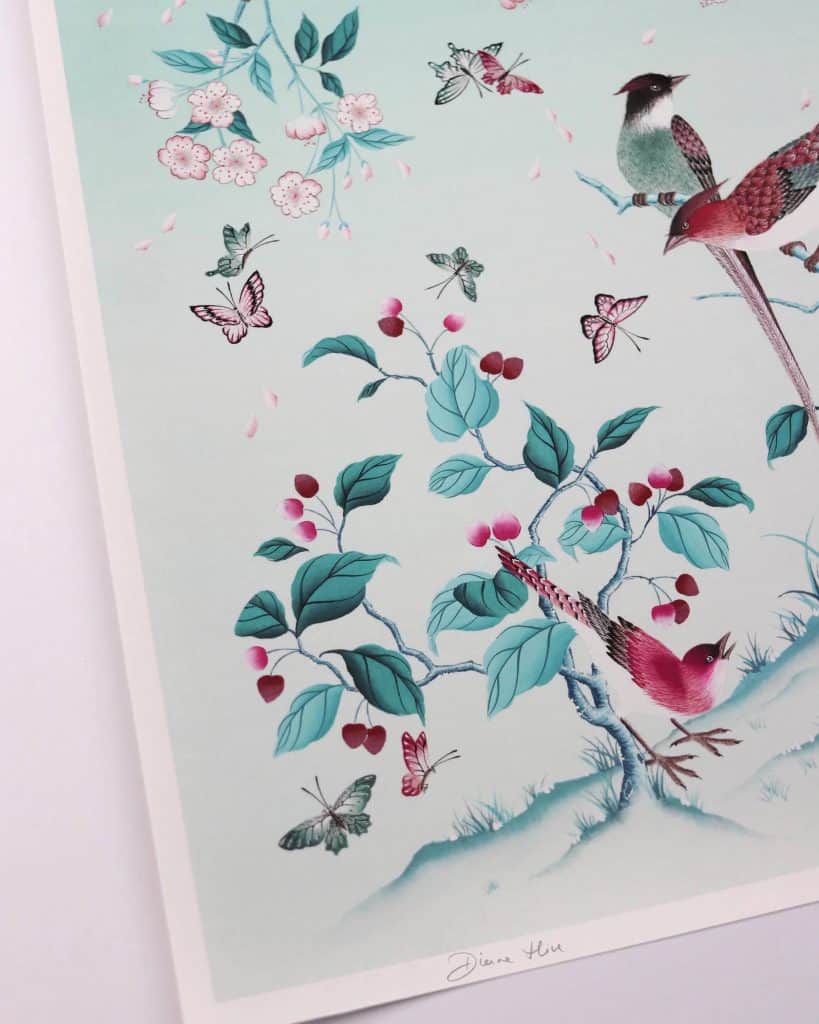
Anything emotional, where you’re helping others or you’re telling a story. People love stories. It’s something. The first thing that we do when we’re kids is we have stories read to us if it has a start and a finish, people love it. So my goal is always to try my best to just get some sort of story element in there or helpful content. It’s not easy and now the demands are so much more, so you really have to be, you can’t get away with posting mediocre content anymore. It has to be quite thought out. You have to have the captions in there. I don’t think Instagram really wants you writing in the caption underneath as much anymore. Like I used to write really long captions, but now that full story is within the video so that people can just absorb it quickly. They’re not gonna go on to read. They’ve got too many other reels to watch.
Stuart: That’s fascinating. And the story aspect, I couldn’t agree more. People identify with a narrative arc. How does the idea for video contact come around? Do you start with thinking, okay I’ve got this project going on, whatever it is, before I even start it I’m gonna think about how I document that or does it just happen more organically? You look at it in hindsight and you think, oh, that was good.
Diane: Hundred percent. It’s always been quite organic with me. I’m not actually very good at systems and stuff. I do religiously look at my iPhone notes and if I just think of an idea for a reel, I will note it down, but generally I am filming everything. So I have way too many videos on my phone and I film with the thought that maybe that could turn into a reel and it’s become in the last six months, it’s more and more. It used to be a bit more specific to if I was painting whatever, then I’d film me painting. But now it seems to be that I’m filming everything cuz it could be even, like I said, that video of my daughter that was just random, that generated sales because my feed was popping up everywhere. So yeah, I’m always documenting.
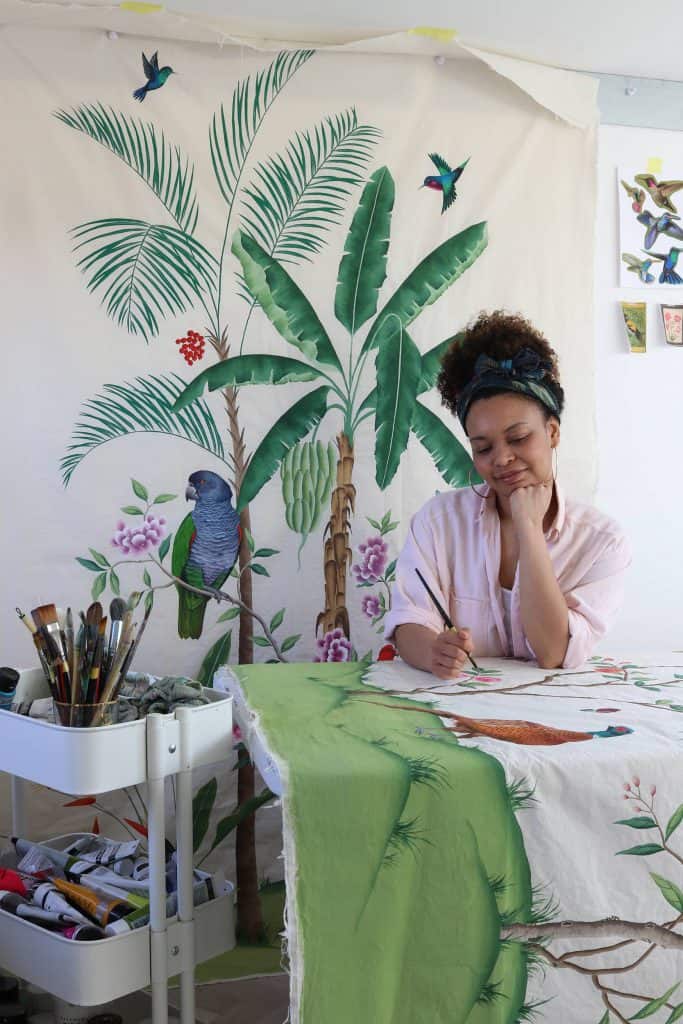
Certain things I know if I am doing an advert for someone, then obviously I know that I’ve got to film this set amount of content. Today we had some deliveries of some really nice furniture so I was filming my builders. They couldn’t get the bed up the stairs so they took out my bathroom window and brought it in through the window. So I was filming all of that and I’ll probably do that one tonight or sometime. I wake up really early in the morning and I look through my videos. I’m like, what have I got? I need to go to Instagram and I’ll just do it. And then I’ll spend a lot of time thinking about what caption I can put on there that can help capture attention. You have to capture people’s attention and you have to keep the caption super, super short. So I’ll just be thinking, I’ll write it out and then I’ll delete. You have to just delete as much as you possibly can while it still makes sense because people don’t have much of an attention span on Instagram now. It’s so noisy. So you just have to be really short and concise.
I think a lot of the best rules are around about 10 seconds. That’s not to say that’s a rule or anything, but the ones that really capture me are just so specific and to the point, maybe with one or two captions.You can really research that by just looking through the reels on Instagram and TikTok and just see which ones are going viral and just look at the reasons why, and you’ll often find there’s a story, there’s emotion, or there’s some sort of helpful, or it’s really funny. It’s like a comedy. So yeah, if you can be funny, like if you’re an artist and you’ve got bags of personality and you can be funny, then that will really work in your favour.
Stuart: If you look at a lot of very well known artists in the past from Van Gogh, Frida Kahlo, Andy Warhol, Jeff Koons, you’d know almost as much about them as a person as you do about their art. You can’t really separate the artists from the art in a way and their personality and their life story from the art. So making autobiographical content, do you think that’s relevant?
Diane: Yeah, I think so. People want to get into your life, but I feel like a lot of people, some of my friends, just can’t do that. They’re private. They find their process is private and they just don’t understand why you’d wanna share like any more than just the final thing, because that’s their private time to create this work and go through the ups and downs, in private. Whereas I am really an open book. I’m like the least private person in the world so it just came naturally to me. And I think that’s probably why I’ve been able to be a bit more successful on Instagram is because I will let everyone know what I’m doing when I go wrong.
I post specific content about when I go wrong. And I think people wanna know your whole story. That personality comes through in your work. But at the same time, I think it can be really hard for some people and I really feel for them in this day and age, because it does seem that it’s all about that and sharing your whole life story. And if you find that a struggle, then yeah, I do feel for people that I’m sure there are other ways. There’s a lot of song and dance now, but for me personally, I love sharing my whole story.
Stuart: Okay, so what about TikTok?
Diane: Yeah, that’s good. So Instagram, they’re trying to give little known creators a platform. They’re not good at it. TikTok is great at it. You can grow much faster. I can’t remember how long I’ve been there. It must be a year, but I’ve got to 10. No, maybe it’s not quite. Just under 10,000 followers and I don’t really go on it very much. I don’t fully know how it works. I just upload videos and I just see what happens, but I don’t necessarily get the sense of community there that I get from Instagram like I know my people but TikTok, I feel like it’s a bit more take, so they just wanna absorb this video and move on. But at the same time, I don’t get any sales through TikTok cuz my Shopify will tell me where I’m getting my sales from and they certainly don’t come through TikTok. They’re all Instagram, Facebook and Pinterest.
I think TikTok is more fun and that’s not to say that it wouldn’t work for other people in getting sales. I think the demographic is super young and they’re not necessarily my customers. I don’t know. Maybe are they buying more fashion stuff there? I don’t know. Like I’ve seen people blow up and sell out on TikTok, but I certainly haven’t. I think it’s artists following me that are looking at my techniques, but yeah, it’s a great platform and it seems to be on the rise, especially if people are so angry at Instagram right now, more people are moving to TikTok. I can’t say that much more about it, cause I just don’t really know how to use it that much. I just do the best I can there. It’s fun.
Stuart: With actually making the art and all the other things you have to do to run a successful art business, do you find that you don’t spend that much time on it cuz you just reach a saturation point in terms of what you can actually do in a day. Cause that’s a whole thing where you’re gonna have to work out what works on TikTok. It’s not like you can take the same content.
Diane: No, each platform has its own requirements. Instagram is obviously number one. I am also on Pinterest. I do quite well on Pinterest. So I do try and put a bit of effort into that. Pinterest is an extremely slow burner. You can put a video up and six months later it’ll go viral. It’s really weird. So it doesn’t feel as engaging for me. Then you’ve got YouTube shorts and Facebook and then TikTok and yeah, you do get completely overwhelmed by it with every one of those having their own needs, because people think, oh, you can just make a video in one and just upload it to others. If you wanna do it right, I do think they have their own needs. And also there’s something about downloading videos from one platform, they will penalise you almost for using it and they will not share it. So there’s that as well.
It’s so important to market yourself and if you are not doing that work, that is your marketing now. That is you putting your billboard up, getting your magazine column. When I don’t post to social media, I don’t get sales. So I have to dedicate more time and effort into my marketing than I do to my painting. It’s crazy. I think a lot of people would say, you should hire someone to do that work for you, but I just don’t think so. I’ve tried it and it’s all about your personality. So if you can create a video and put it in front of people, get your sales, then that’s good enough for me and hiring staff to me does not sound very chilling personally.
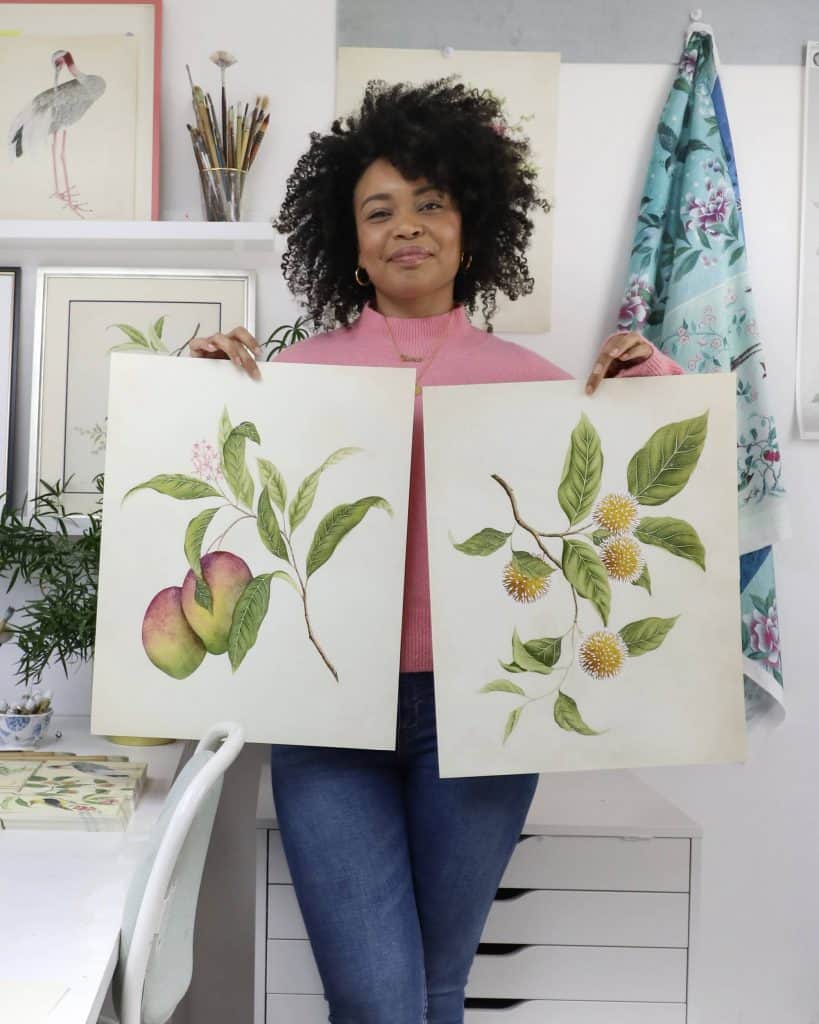
Stuart: No, for sure. So what would you say the split of your time is, say over the last year, in terms of the amount of time you spend marketing yourself and the amount of time you spend making work.
Diane: Oh my god! It was probably like 70% marketing. I feel like I don’t paint that much. When I was creating, I got a wallpaper collection and fabric with Harlequin. That was a pretty big deal. And I was intensely painting for maybe six or more months. I was still marketing a little bit in the background, but generally it’s 70% marketing. I need to paint some new work, definitely. I’m reminding myself I need to. Not enough time in a day for everything.
Stuart: Yeah, totally. I know that feeling. Do you find that it takes you away from what you really love doing or do you just love it equally? Do you love marketing and creating content? Because that’s creative in itself.
Diane: Yeah, I think I love creating content and I love the sharing and the community aspect that comes with it. So I think I equally like it. Sometimes I can actually get quite stressed out in my painting process, I have to say, because I’m far too much of a perfectionist. I dunno. I’ll be constantly on the phone to my mom, like sending her WhatsApp pictures of what I’ve done in the night. It’s not good enough. Oh my gosh, no one’s ever gonna buy this. My work is horrendous. That’s my creative process. And sometimes like with making content, I just find it can be time consuming, but it does come quite naturally to me to share. So it is definitely equal. It doesn’t feel necessarily like a hardship to create all this work. I really do enjoy my painting. When it’s going really well, I think oh this is great. But I do like to get to the end result a bit quicker so that I can get on with getting this out there. I maybe not as much about the process as I am about the sharing.
Stuart: Yeah, it sounds like you have that similar kind of self doubt about your own creativity. I think that it seems like a very common sort of thing with creative people. And I think that stops a lot of people from even getting off from base one effectively because they just don’t want to show their work.
Diane: They don’t want to expose themselves. I know how that feels and people won’t believe me when I say that’s how I feel every time. I feel like I’m exposing myself. And then if you don’t get enough likes, then the feeling can be overwhelmingly horrendous. It just can make you feel like you are worthless. And that is the danger of this Instagram world. So I still have a huge variation in engagement. I can have 300 or many thousands of likes and sometimes when you get the 300 at this level of following that I’ve got, it can make you feel like what have I done wrong? It doesn’t matter what level you’re at, how many followers you have, you always feel bad or feel amazing based on what your audience has given you.
Stuart: How effective for you is email marketing? Do you get people signed up on the website?
Diane: It is actually the most effective. My email list is small, but they are ready to buy. They love me. And from my Shopify stats my highest revenue comes from email marketing. A year ago I made that my top priority. I used Klaviyo as an app. It’s amazing. I listened to a lot of podcasts like this and the thing that just kept coming up time again was Klaviyo. So I integrated that with my Shopify and it just integrates so well. And when I started to put effort into it, that’s when I really noticed that email marketing is really important and I started really trying to get people on my email list with lots of tactics.
I’ve got this huge Instagram following and then in comparison a tiny email list. So I ran a competition and got a lot of signups from that, just a voucher. I think it was a 250 pound voucher. I put them into a different segment, the competition entries, and the majority of them actually stayed, which was really good. Most of the time when I do an art print launch or some sort of launch, I build it up for ages and I’ll be building up and saying to these Instagram followers, you have to get on my list to be the first to purchase this. Or it could even be like an exclusive sale, like I’m holding a sale and you can only have it if you’re on the email list. You create exclusivity and they’re gonna get these special perks and the more you do that, the more it will grow. I could be doing it so much more, to be honest.
Those people on your email list are super, super important. And I think SMS as well is something that I need to look into because that could be, I think British people are a little bit more, oh, I dunno about that, but it’s definitely, I feel like we are like a few steps behind the US a lot in things like this. And SMS marketing, I think, is already a big thing, but I think it’s gonna get even bigger. I just need to take the plunge and ask people to invade their text messages, which feels a bit invasive. But I think if you really like someone, then a quick text to tell you you’ve got a sale on is nice. Sometimes you miss your emails, don’t you? Or there’s just so much marketing in there.
Email marketing, a hundred percent, is very important. Probably more important than social media, but not quite as fun.
Stuart: Do you find people on your email list buy repeated times?
Diane: Yeah, cuz they’re the ones that really love you. So yeah, I do find that. But they do need an offer and they do need new work and, as I said earlier, that’s where I struggle, with creating new work. So yeah, it’s about offers and new stuff or just letting them know what you’re up to without trying to sell them something, is really nice or just trying to help them. I sent an email about how to make a small artwork look bigger and how to frame it in a certain way. You can buy a tiny artwork for less money, if you’re on a budget, and make it look amazing. So yeah, helpful things like that are great as well.
Stuart: You touched on something there, which I think is really interesting, something I wanted to ask or I always ask is: How important is it for your work to evolve over time? Because people love your work so much, do they want you to not evolve it and to be doing the same stuff?
Diane: Yeah, I think it can evolve to a certain extent and I think as an artist, you can do whatever you want but I do feel like people just want the same thing in different colours and different sizes. And when you start to get a bit too out there then I think they’ll let you know by not purchasing anything. I painted a tiger and I don’t think the response was very good. I probably couldn’t do another animal other than birds and butterflies. I know what my audience wants and I think they just want it in different sizes, different colours. They want more of it.
I think I could evolve slightly. A lot of it is that you can evolve into different products like I’ve done wallpaper and fabric and just put the designs on there. But a lot of the successful people that I’m looking at, that have got like bigger businesses, they’d stick to the same style. And you lose part of your audience if you start to throw out things that are slightly different, because then say it’s on your Instagram feed and it looks like something you don’t recognize and not engage because you just don’t recognize them. So I’m having a lot of that at the moment actually just because I’m uploading a lot of stuff about my house and there’s a lot of artists that follow me just for my watercolour painting. And they’re like, what is this? There’s home renovation. I don’t care about this.
My following goes down when I do that, but I don’t care because I just want to tell my story and do what I wanna do. And I love interiors and the people that love me will just stay because they just wanna know about everything that’s going on in my life. So I think as an artist, you can just do what you wanna do. I have seen people evolve and change. But I guess my final advice would probably be to stick with a certain stuff. If you want to retain an audience, then that would be my advice.
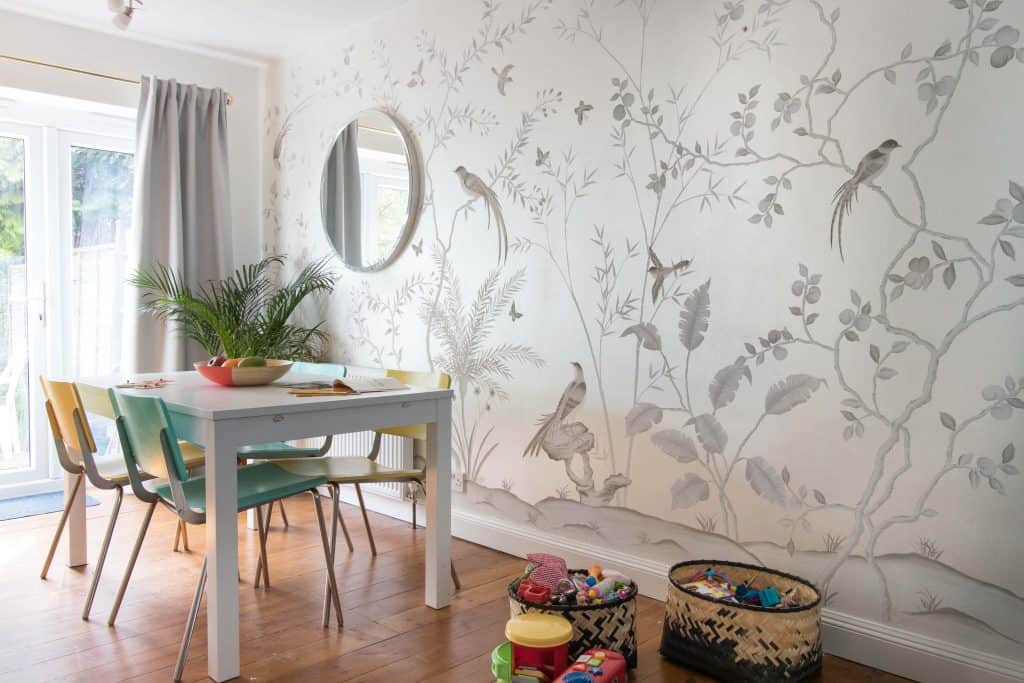
Stuart: It’s a tricky one. You see it with bands as well. They get known for a certain style and then put out an album that’s completely different. They gain a load of new followers, but they also make some of their existing ones really angry.
I noticed you have reviews on your site, which is an interesting one because I don’t see that a lot with artists. Was that a tricky decision as to whether you wanted to do that? Because these are customer generated reviews, do you think it really helps you?
Diane: I listen to a lot of business and marketing podcasts and I’m always listening to what much bigger businesses than me do and the things that I hear over and over again are things that I will implement for myself. And I think the reviews, social proof of whatever kind, just come up over and over again. So I thought, I know I’m an artist, but I think it would help other people to see photos of it. I specifically got the Loox app, which has photo and video reviews, so it would help other people to see a photo of an art print in their house. Cuz I know that when I’m going on a website and I’ve been shopping on B&Q recently, I don’t wanna see that polished picture as much as I wanna see what it really looks like in someone’s house.
I think that will really help me to purchase it. But also if you don’t have that, then you are just showing this portfolio and how can people necessarily trust that you are real, or if they’re from a far away country and they can’t relate to you in any way, they need that. And seeing their name, Jenna or whatever, and a picture like someone took a selfie with my phone case. It just means that real people are buying from you. They’re sharing their experience and when you hope that they’re all good, like all my reviews so far are good. That’s definitely gonna help them to make the purchase. Hundred percent.
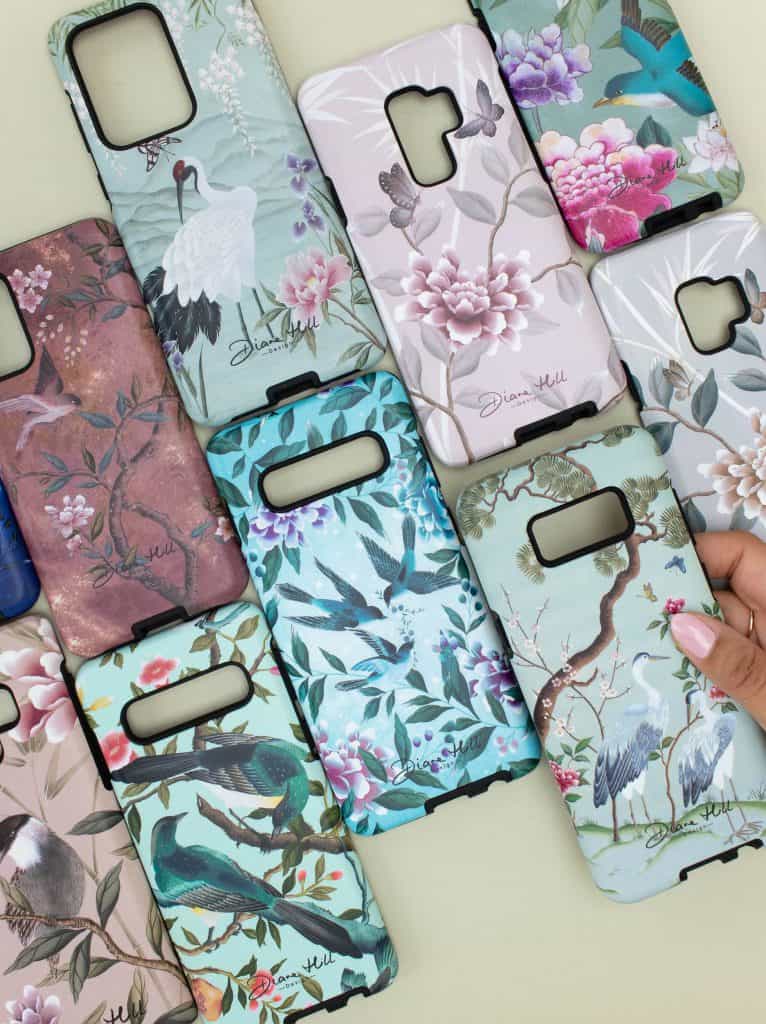
I put them on my homepage as well. I think social proof is really important throughout the website. I could put them in even more places but on the homepage I take quotes from people’s reviews. There’s like a widget from the Loox app where you can create a little carousel of the photo reviews. I put that all on the homepage as well as things like any articles or stuff. All on the homepage because I think one of the most important things is social proof.
Stuart: Absolutely. You mentioned something there about purchases from overseas. How international does your market go? Do you find it is predominantly UK or is it UK, Europe, US? How is it split?
Diane: Yeah, it’s predominantly US. It’s quite split between the UK and US but I think it’s slightly more, maybe 60% US and then all over the world, definitely. I see all this coming in from like super, like far away. And that is solely because of the free worldwide delivery. From day one selling prints I offered free worldwide delivery so I have nothing really to compare it to, but I could imagine it wouldn’t be as great.
Stuart: And it would be frustrating for some people, cuz I guess your Instagram following is by definition from anywhere. I don’t think the algorithm really focuses you on any particular geography. It’s more about interest.
Diane: I measured it. I can’t remember what it was. There’s a tiny percentage from the UK. I think I only have 20,000 UK followers. Someone was asking me for my stats and I was really shocked by that. So yeah, mostly international.
Stuart: Does the following that you have on your Instagram kind of reflect in terms of geography, fairly evenly in the sales?
Diane: Interesting. I think yeah, it’s a high percentage of the US on my Instagram and that is where most of the sales come in. It’s a huge place with lots of money.
Stuart: And they’re also very used to buying online out there.
So growing a successful business is really hard and obviously first and foremost there’s creating the work and that’s a combination of creative vision and the skill aspect of it as well. But then beyond that you’ve got all those other things. You have to do the marketing, the business skills, the belief, the vision, being good with finances, understanding the market etc. So many things you have to master, which of these skills were really hard for you? And how did you overcome the difficulty in mastering them?
Diane: Finances. It was really bad. I think a lot of artists will say this to you though. I got an accountant and luckily, my husband really helps me with anything like signing. If you do a brand deal with someone or collaborate in some way, then there always seems to be a contract to sign and I’m just lucky in that regard that my husband can help me because he deals with these things. With profit margins and things like that, I just sit and try and work it out the best I can, that I’ve left enough in it to make it viable.
I think that people would maybe believe from what they see of me online that I can present myself really well, but actually that’s the hardest aspect of my whole business from the start to now. It’s never got better. Even being on this podcast. I’m alright right now, but there is anxiety and the build up in things like this and presenting in a room of people is like a total nightmare. Discussing things like a brand deal can be tricky for a lot of people, especially with artists at the start, when you feel guilty. You need them but actually they need you. So it takes a lot of time to really work that one out and gain confidence in yourself.
I think at the start I gave too much away for not what it was worth. And now I’m definitely a bit more business minded when it comes to these things. And if the deal doesn’t seem to be attractive for me, then I will let them know and present them with an offer that would really suit me. But that absolutely takes so much time. You just have to gain that confidence and that will only come with time, I think. And if you’ve got some sort of debilitating issue, like I do with public speaking and stuff, then I just choose not to do it really as much as possible. I just avoid that. If it’s gonna really cause that much stress it’s handy to present yourself and you. I think back in the day you really needed to, but now I think less and less. If you are a very private person, you can just upload your videos of you doing what you do and make a real success of it in private, just with your phone.
Stuart: This has been absolutely fantastic. So much advice here. I’ve just got a couple more questions.
The first one is, do you have a strategy for how your art practice and your art business is gonna evolve over the next five years? Do you have a plan or do you just let things evolve naturally?
Diane: I do let things evolve naturally just because I’ve got to a point now where I had lots and lots of goals that I wrote down and I have actually achieved most of them. That sounds really arrogant, but I’ve achieved so much on my list in the last few years and I’ve just got to this point where I feel really content and that is the most amazing feeling. Every day I’m happy. Like I’m really happy and I spend more time doing things that I really wanted to take a bit of a graph to get there, but it’s such a liberating feeling. So right now I feel like it would be very organic. I want to see how my wallpaper and fabric collection does, because that was a huge launch. It’s only really been out for a couple of months. I’ll see how that goes.
I actually want to get into teaching. I’ve been approached a few times to do online courses and that is a whole another world that I think could almost change my business. I actually recently started to sell the silk paper that I paint on, to artists. It was something that I was so nervous about doing. And I just kept getting asked over and over again so I just did a sort of pre-order and I sold a bunch of that to artists, and it was really lovely hearing them, their feedback on it and how much they loved this paper. You just can’t seem to get it anywhere. They keep asking me for videos and help with the techniques and I thought I could just start creating some courses.
I think that’s often what people do when they get to a level where they’re really content. They start to help other people try and get to where they are now.
Stuart: Yeah, absolutely. My final question, what two or three pieces of advice would you give to someone who’s starting out right now?
Diane: You have to be really passionate and really hard working at the start. You have to get on Instagram. You have to create quality content. That is how everything happened for me. You have to capture quality video and quality photography and get it on your website. Once you’ve got that foundation, then you’re gonna be okay. I think as long as you’ve got that quality and then combine that passion and hard work. If you haven’t got that passionate streak and that hard work and ethic, it could be much harder. I think you just have to just put your heart and soul into it. And I always think that if someone wants something, they are definitely gonna get it. If you want something bad enough, you can absolutely make it happen.
Stuart: Fantastic. Thanks Diane. That was packed with incredible advice. It was absolutely brilliant and it’s incredibly inspiring. We’ve obviously seen your progress at theprintspace and it’s incredibly inspiring. Thank you for taking the time to give some of that knowledge back to the community.
Diane: Oh, thank you. I’m honoured. I absolutely love theprintspace. I vouch for you in a big way and I’ve got lots about you on my website. I think the service that you offer is phenomenal and it can really help to change people’s lives. And when a business solves a problem, that is amazing, isn’t it? Especially for artists who think in this starving art mentality. It definitely doesn’t need to be that way. With theprintspace combined with your social media marketing efforts, you can blow up and be hugely successful and earn a nice living off of your art.
Stuart: Fantastic. Thanks a lot!
Diane: Thank you so much!
